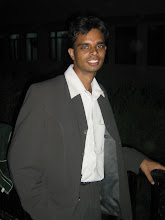
In the modern India there was born a hero who was desperate to fight against the British Raj and his leadership qualities are so much intensive that attracts people without a second thought.Let's meet one of the greatest heroes of Modern India.
Birsa was born in the mid-1870s. The son of a poor father, he grew up around the forests of Bohonda, grazing sheep, playing the flute, and dancing in the
local akhara. Forced by poverty, his father had to move from place to place looking for work. As an adolescent, Birsa heard tales of the Munda uprisings of the past and saw the sirdars (leaders) of the community urging the people to revolt. They talked of a golden age when the Mundas had been free of the oppression of dikus, and said there would be a time when the ancestral right of
the community would be restored. They saw themselves as the descendants of the original settlers of the region, fighting for their land (mulk ki larai), reminding people of the need to win back their kingdom.
Birsa went to the local missionary school, and listened to the sermons of missionaries. There too he heard it said that it was possible for the Mundas to
attain the Kingdom of Heaven, and regain their lost rights. This would be possible if they became good Christians and gave up their “bad practices”. Later Birsa
also spent some time in the company of a prominent Vaishnav preacher. He wore the sacred thread, and began to value the importance of purity and piety.
Birsa was deeply influenced by many of the ideas he came in touch with in his growing-up years. His movement was aimed at reforming tribal society.
He urged the Mundas to give up drinking liquor, clean their village, and stop believing in witchcraft and sorcery. But we must remember that Birsa also turned against missionaries and Hindu landlords. He saw them as outside forces that were ruining the Munda way of life. In 1895 Birsa urged his followers to recover their glorious past. He talked of a golden age in the past – a satyug (the age of truth) – when Mundas lived a good life, constructed embankments, tapped natural springs, planted trees and orchards, practised cultivation to
earn their living. They did not kill their brethren and relatives. They lived honestly.
Birsa also wanted people to once again work on their land, settle down and
cultivate their fields. What worried British officials most was the politicalaim of the Birsa movement, for it wanted to drive out missionaries, moneylenders, Hindu landlords, and the government and set up a Munda Raj with Birsa at its head. The movement identified all these forces as the cause of the misery the Mundas were suffering. The land policies of the British were destroying their traditional land system, Hindu landlords and moneylenders were taking over their land, and
missionaries were criticising their traditional culture.
As the movement spread the British officials decided to act. They arrested Birsa in 1895, convicted him on charges of rioting and jailed him for two years.
When Birsa was released in 1897 he began touring the villages to gather support. He used traditional symbols and language to rouse people, urging them to destroy “Ravana” (dikus and the Europeans) and establish a kingdom under his leadership. Birsa’s followers began targeting the symbols of diku and
European power. They attacked police stations and churches, and raided the property of moneylenders and zamindars. They raised the white flag as a symbol of Birsa Raj.
In 1900 Birsa died of cholera and the movement faded out. However, the movement was significant in at least two ways. First – it forced the colonial government to introduce laws so that the land of thetribals could not be easily taken over by dikus. Second – it showed once again that the tribal people had the capacity to protest against injustice and express their anger against colonial rule. They did this in their own specific way, inventing their own rituals
and symbols of struggle.
View my profile at leapfish

